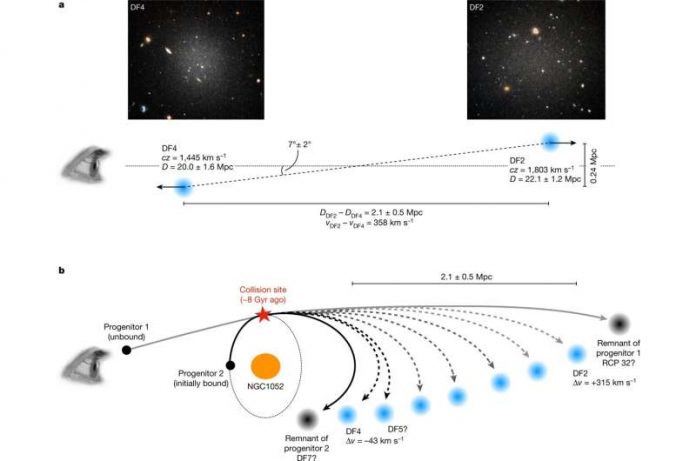A team of astrophysicists affiliated with multiple institutions in the U.S. have developed a new theory to explain the existence of dark matter–free dwarf galaxies. The study has been published in the journal Nature. In the research paper, the scientists proposed that a collision between two dwarf galaxies could explain the dark matter–free dwarf galaxies.
These types of galaxies have been discovered over the past several years. Eun-jin Shin and Ji-hoon Kim with Seoul National University have published a News & Views piece in the same journal issue. They have outlined the work and findings by the researchers in this new effort.
Scientists discovered a dwarf galaxy which appeared to have no dark matter. The galaxy had no detectable gravitational pull. Then, another team discovered one in the same general vicinity as the first. From then, scientists have been seeking to explain the strange findings.
In the new study, scientists expanded on studies by other teams indicating evidence of dark and normal matter separating on a large scale when clusters of galaxies collide. They suggested that something similar happened to result in two or more dwarf galaxies forming with no apparent dark matter. They note that there are several other dwarf galaxies near the two that have been found already. Those galaxies appear to line up in the sky. The searchers note that the two galaxies studied thus far are moving away from each other. This suggests that they may have the same origin.
The researchers suggest a collision between two dwarf galaxies could have split the gas within them. It resulted in the formation of new and smaller dwarf galaxies, some of which have no dark matter. Those without dark matter could have formed because dark matter does not interact with itself or regular matter. This means that it could easily have exited the debris field from the collision and even continued out into space.

